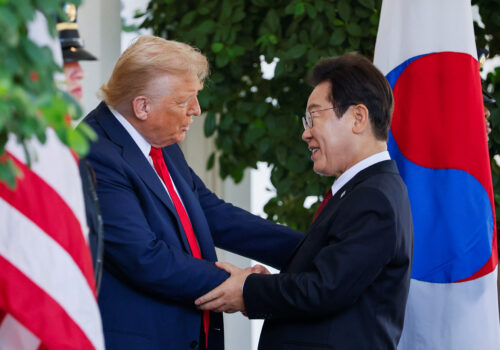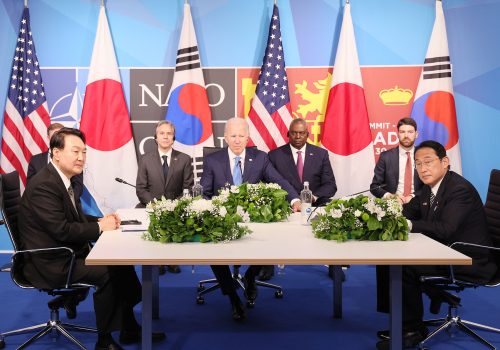A next-generation agenda: South Korea-US-Australia security cooperation
Bottom lines up front
- There is great potential for expanded trilateral cooperation among the United States, South Korea, and Australia, but they will need to overcome the “tyranny of distance” and the resulting diverging threat perceptions.
- The three partners should do more to take advantage of the varied applications of critical and emerging technologies, as well as engage further with other partners in the region on these topics.
- The partners can focus their efforts on concretely developing cooperation through public-private collaboration through avenues such as defense industry cooperation, research and development (R&D), and infrastructure projects.
South Korea and Australia have consistently built upon cooperation as two “middle powers” in a region of ever-growing global importance and dynamism. At the same time, the two countries have bolstered their respective alliances with the United States, building regional bilateral and multilateral collaboration. Ultimately, capitalizing on the potential for growing collaboration and cooperation between the United States, South Korea, and Australia could be key to maintaining security and prosperity in the Indo-Pacific. However, when it comes to bringing several countries together in a collaborative environment, there are inherent challenges to reaching a consensus.
To meet that challenge, the Atlantic Council and the Korea Foundation gathered mid-career and junior experts from the United States, South Korea, and Australia in two private workshops. The group identified several obstacles to cooperation—namely, differing geostrategic circumstances, diverging threat perceptions, different strategies for engaging with China, and a lack of consistent engagement between the countries. Despite this, there are several key opportunities to bolster cooperation—namely, defense industrial cooperation, joint endeavors in science and technology, developing maritime security, and collaborating on engaging additional partner countries and multilaterals.
The rising generation of policymakers we spoke with zeroed in on four ways to improve the trilateral relationship:
- cultivate defense industry collaboration and public-private cooperation;
- institutionalize relationships and expand joint exercises;
- foster expanded R&D of critical technologies; and
- develop disaster-resilient infrastructure projects and early warning systems.
view the full issue brief
about the authors

Lauren D. Gilbert is the deputy director of the Atlantic Council’s Indo-Pacific Security Initiative housed within the Scowcroft Center for Strategy and Security. In this role, she oversees research and programming focused on engaging with US, allied, and partner governments and other key stakeholders to shape strategies and policies to mitigate the most important rising security challenges facing the region.

Kester Abbott is a research associate at the United States Studies Centre at the University of Sydney and a non-resident James A. Kelly Korea fellow at the Pacific Forum. He works on US Indo-Pacific strategy, defense industry issues, and Northeast Asian security dynamics, with a focus on South Korean foreign relations.

Hannah Heewon Seo is the events administrator at The Australia Institute, with a background in international affairs organizations in Australia and South Korea. Her focus centers on foreign relations and diplomacy, particularly engagement with the Asia-Pacific, and the opinions expressed do not represent those of The Australia Institute.
related content
explore the program

The Indo-Pacific Security Initiative (IPSI) informs and shapes the strategies, plans, and policies of the United States and its allies and partners to address the most important rising security challenges in the Indo-Pacific, including China’s growing threat to the international order and North Korea’s destabilizing nuclear weapons advancements. IPSI produces innovative analysis, conducts tabletop exercises, hosts public and private convenings, and engages with US, allied, and partner governments, militaries, media, other key private and public-sector stakeholders, and publics.
Image: United States Navy Ship USS Pearl Harbor alongside at Lae in Papua New Guinea as the Republic of Korea Ship II Chul Bong departs during Exercise Pacific Partnership. Photo by WO2 Max Bree, Australian Department of Defence.



